To create a documentary-worthy photo series, you'll need a compelling narrative arc that engages viewers from start to finish. Your images should maintain visual consistency through a unified color palette and shooting style. Capture authentic, unfiltered moments that evoke strong emotions and highlight cultural relevance. Focus on technical excellence in composition and timing, even when using a smartphone. Don't forget to reflect on ethical implications, obtaining consent and avoiding exploitation. Aim for a unique perspective or innovative storytelling approach that sets your work apart. By mastering these elements, you'll be well on your way to crafting a powerful visual narrative that resonates with audiences.
Compelling Narrative Arc
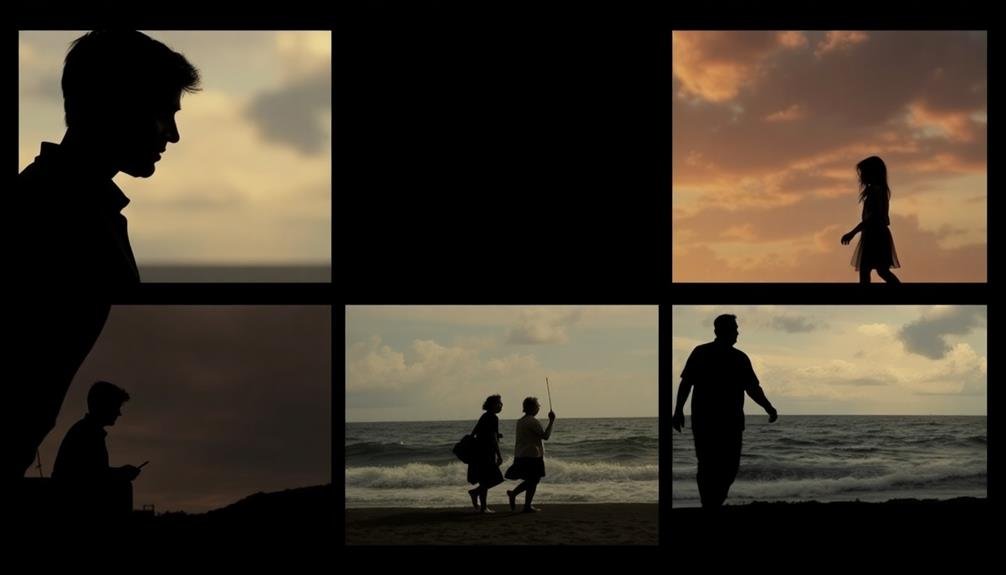
Within the domain of documentary-worthy photo series, a compelling narrative arc stands out as an essential element. You'll need to weave a story that captivates viewers from start to finish, drawing them into the world you're documenting.
Begin by identifying the key characters, events, or themes that will drive your narrative forward. As you construct your arc, consider the classic storytelling structure: introduction, rising action, climax, falling action, and resolution. Each image should contribute to this progression, building tension and interest as the series unfolds.
You'll want to carefully select and sequence your photos to create a cohesive flow that guides viewers through the story. Don't shy away from conflict or challenges within your narrative. These elements add depth and authenticity to your documentary, making it more engaging and relatable.
Remember to balance the broader story with intimate, personal moments that humanize your subjects and connect with your audience on an emotional level. By crafting a strong narrative arc, you'll transform your photo series from a collection of images into a powerful, documentary-worthy story that resonates long after viewing.
Visual Consistency and Cohesion
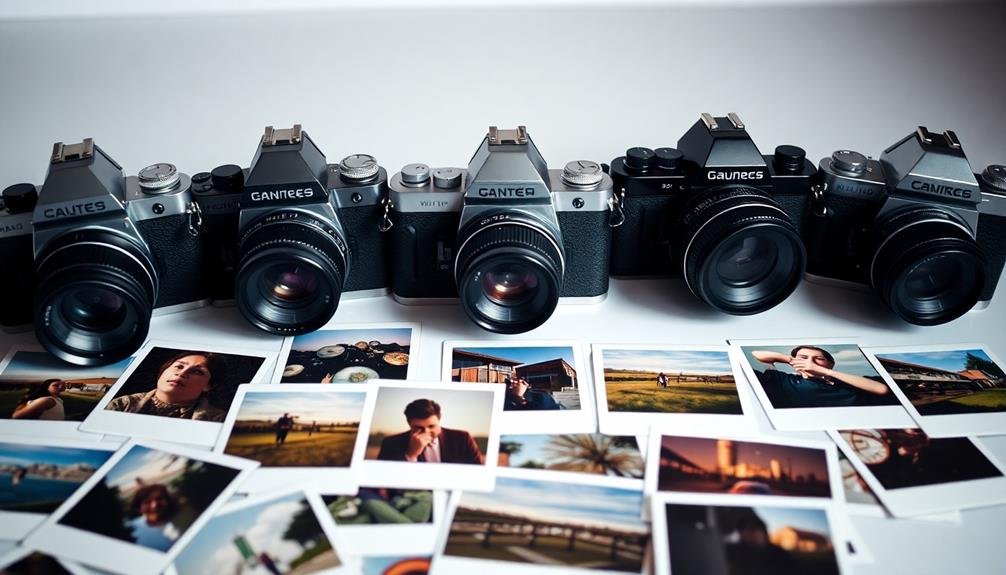
To achieve visual consistency and cohesion in your photo series, focus on creating a unifying color palette that ties your images together.
Maintain a consistent shooting style throughout the series, whether it's a specific composition technique or lighting approach.
Incorporate recurring thematic visual elements that reinforce your narrative and create a cohesive visual language across your photographs.
Unifying Color Palette
A unifying color palette ties your photo series together, creating visual consistency and cohesion. It's a powerful tool that can evoke specific emotions and set the overall tone of your documentary. To achieve this, you'll want to choose a color scheme that complements your subject matter and reinforces your narrative.
Start by analyzing the dominant colors in your environment or subject. Consider using a limited palette of 3-5 colors that work well together. You can adjust your camera settings, use filters, or edit in post-production to maintain this consistency.
Pay attention to the mood you want to convey – warm tones for intimacy, cool tones for detachment, or muted colors for a somber atmosphere.
Don't be afraid to break your color rules occasionally for emphasis. A pop of contrasting color can draw attention to a vital element in your story. Remember, your color palette should enhance, not overpower, your subject matter.
It's a subtle yet effective way to guide your viewer's eye and create a cohesive visual experience throughout your photo series. With a well-executed color strategy, you'll elevate your work to documentary-worthy status.
Consistent Shooting Style
While color unifies your series visually, a consistent shooting style cements your documentary's cohesion. You'll want to maintain a uniform approach throughout your project, whether you're shooting landscapes, portraits, or candid moments. This consistency helps viewers connect with your narrative and reinforces your artistic vision.
Choose a specific style and stick to it. Will you use wide-angle lenses for environmental context or telephoto lenses for intimate details? Decide on your preferred depth of field, lighting techniques, and compositional rules. If you're shooting street scenes, determine whether you'll capture subjects head-on or from oblique angles. For portraits, settle on a consistent subject-to-camera distance and framing style.
Consider your camera settings as well. Maintain similar exposure values, shutter speeds, and ISO ranges across your series. This doesn't mean every photo should be identical, but they should feel cohesive when viewed together.
Thematic Visual Elements
Thematic visual elements serve as the backbone of your photo series, tying individual images together into a cohesive narrative. These elements include recurring colors, shapes, patterns, or subjects that create a visual thread throughout your work. To achieve this, you'll need to identify and emphasize key visual motifs that align with your documentary's theme.
Consider using a consistent color palette that reflects the mood of your subject matter. For instance, muted tones might suit a somber topic, while vibrant hues could enhance a more upbeat narrative. Repetition of shapes or patterns can also create a strong visual link between images. This could be architectural elements, natural forms, or even the positioning of subjects within the frame.
Pay attention to the composition of your shots, maintaining a similar style across the series. This might involve consistently using specific angles, framing techniques, or focal lengths.
Authenticity in Subject Matter

To create a documentary-worthy photo series, you'll need to focus on capturing raw, unfiltered real-life moments.
Your lens should be a window into genuine human experiences, revealing the truth of your subjects' lives.
Raw, Unfiltered Real-Life Moments
Capturing raw, unfiltered real-life moments is at the heart of documentary-worthy photo series. You'll need to develop a keen eye for genuine interactions and emotions that unfold naturally. Look for instances where subjects are unaware of the camera or have forgotten its presence. These candid shots often reveal the most authentic aspects of human experience.
To achieve this, you'll need to be patient and observant. Anticipate key moments and be ready to capture them quickly. Don't shy away from imperfections or less-than-flattering situations; they often tell the most compelling stories. Embrace the unexpected and be willing to adapt your approach as events unfold.
Consider using techniques like long-term immersion or fly-on-the-wall photography to blend into your subjects' environment. This approach allows you to capture intimate moments that might otherwise be missed.
Capturing Genuine Human Experiences
The heart of documentary-worthy photo series lies in authenticity. To capture genuine human experiences, you'll need to immerse yourself in your subjects' lives, building trust and rapport. This approach allows you to witness and document unguarded moments that reveal the true essence of their stories.
When photographing real-life experiences, focus on:
- Emotional depth: Look for moments that convey raw feelings, whether it's joy, sorrow, or contemplation.
- Cultural context: Showcase elements that reflect the subject's environment, traditions, and daily routines.
- Interpersonal dynamics: Capture interactions between people to illustrate relationships and social structures.
Your goal is to present a narrative that resonates with viewers on a human level. Don't shy away from challenging or uncomfortable scenes; they often provide the most powerful insights. Remember, you're not just taking pictures; you're preserving slices of life that might otherwise go unnoticed.
As you develop your series, aim for a balance between aesthetics and authenticity. While composition and technical skill are important, they shouldn't overshadow the genuine moments you're capturing.
Let the story unfold naturally, and be patient in waiting for those perfect, unscripted instances that truly define documentary photography.
Emotional Impact and Connection
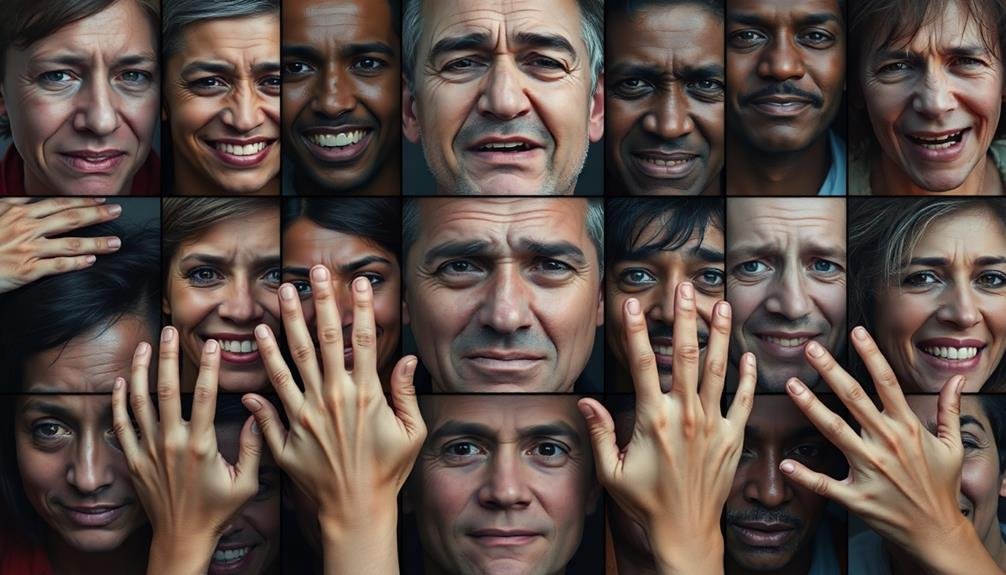
Emotional resonance is the heartbeat of a truly documentary-worthy photo series. Your images should evoke strong feelings in viewers, creating a lasting impact that lingers long after they've seen your work.
To achieve this, you'll need to dig deep and connect with your subjects on a personal level. As you capture moments, focus on the raw, unfiltered emotions that unfold before your lens. Look for subtle expressions, body language, and interactions that reveal the essence of human experience.
Don't shy away from difficult or uncomfortable situations; often, these are the most powerful and thought-provoking. Remember, your goal is to bridge the gap between subject and viewer.
Use composition, lighting, and timing to emphasize the emotional core of each image. Consider how different elements within the frame contribute to the overall feeling you're trying to convey.
Cultural or Social Relevance

A truly documentary-worthy photo series must resonate beyond individual emotions to address broader cultural or social issues. Your work should capture the zeitgeist of a particular time, place, or community, shedding light on important social dynamics or cultural phenomena.
When viewers engage with your series, they should gain insights into societal challenges, traditions, or transformations that are relevant to a wider audience.
To achieve cultural or social relevance, consider focusing on:
- Underrepresented communities or marginalized groups
- Emerging social movements or cultural shifts
- The impact of global events on local populations
You'll need to research thoroughly and immerse yourself in the subject matter to guarantee authenticity and depth in your storytelling.
Aim to present a nuanced perspective that avoids stereotypes and oversimplification. Your photo series should spark conversations about important issues and potentially inspire action or change.
Unique Perspective or Approach
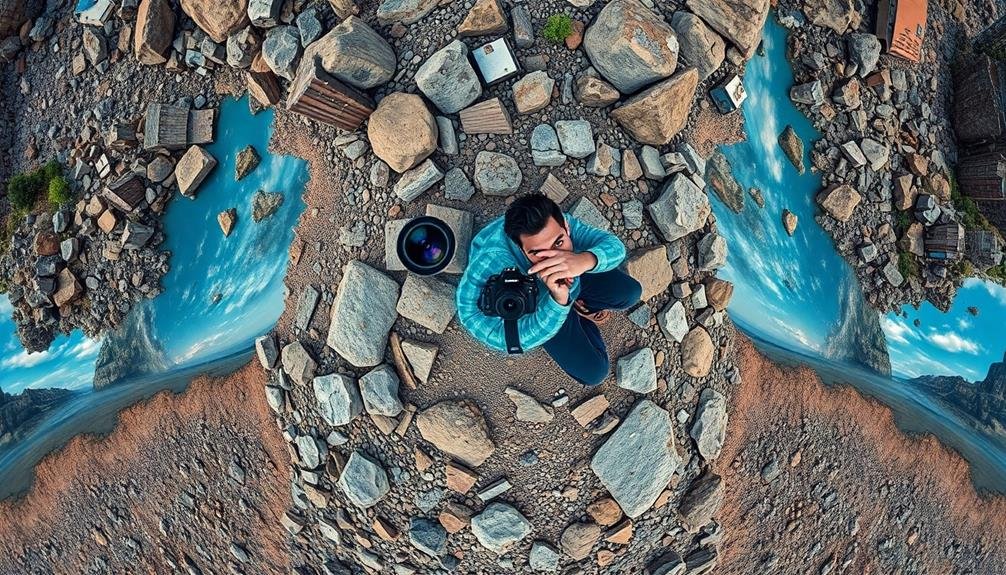
You'll find that a documentary-worthy photo series often presents a fresh angle on a familiar subject.
By employing innovative storytelling techniques, you can captivate your audience and offer new insights.
Consider using unconventional compositions, unexpected juxtapositions, or a unique narrative structure to bring your subject matter to life in an original way.
Fresh Angle on Familiar
Finding a fresh angle on familiar subjects is the hallmark of a truly innovative photo series. When you're tackling well-known themes, it's essential to bring something new to the table. Your unique perspective can transform the ordinary into the extraordinary, capturing viewers' attention and sparking their imagination.
To achieve this, you'll need to challenge your own preconceptions and push beyond conventional approaches. Consider these strategies:
- Experiment with unusual vantage points
- Play with light and shadow in unexpected ways
- Incorporate unconventional elements or juxtapositions
By employing these techniques, you can breathe new life into even the most well-trodden subjects. Think about how you can reframe everyday scenes or objects to reveal hidden aspects or tell a different story.
Maybe it's capturing a bustling city street from ground level or photographing a common household item in extreme close-up.
Innovative Storytelling Techniques
Innovative storytelling techniques can elevate your photo series from good to unforgettable. By employing unique approaches, you'll captivate your audience and leave a lasting impression. Consider experimenting with non-linear narratives, where you present your images in an order that challenges conventional chronology. This approach can create intrigue and encourage viewers to piece together the story themselves.
Another powerful technique is to incorporate mixed media elements. Combine your photographs with text, illustrations, or even audio to create a multi-sensory experience. This layered approach can add depth and context to your visual narrative.
Here's a quick guide to some innovative storytelling techniques:
| Technique | Description | Impact | Best Used For |
|---|---|---|---|
| Non-linear narrative | Presents images out of chronological order | Creates intrigue | Complex stories |
| Mixed media | Combines photos with other elements | Adds depth | Multi-faceted topics |
| Interactive elements | Allows viewer participation | Increases engagement | Digital platforms |
| Metaphorical imagery | Uses symbolic representation | Evokes emotions | Abstract concepts |
Technical Excellence in Smartphone Photography

The pursuit of technical excellence in smartphone photography has become increasingly accessible to amateur and professional photographers alike.
With advanced camera systems and powerful editing apps at your fingertips, you can create stunning images that rival those shot on professional cameras.
To achieve technical excellence, focus on mastering your smartphone's camera settings, understanding composition principles, and honing your post-processing skills.
To elevate your smartphone photography to documentary-worthy standards:
- Learn to use manual controls: Adjust exposure, ISO, and shutter speed to capture the perfect shot in challenging lighting conditions.
- Experiment with different lenses: Invest in clip-on lenses or utilize your phone's built-in wide-angle and telephoto options to expand your creative possibilities.
- Master editing techniques: Use professional-grade editing apps to fine-tune your images, adjusting color, contrast, and sharpness to achieve a polished look.
Effective Use of Composition

Mastering composition is essential for creating compelling smartphone photographs that tell a story. When framing your shots, consider the rule of thirds, which divides your image into a 3×3 grid. Place key elements along these lines or at their intersections to create balance and interest.
Don't be afraid to break this rule when it serves your narrative. Pay attention to leading lines that guide the viewer's eye through the image. Use natural elements like roads, rivers, or architectural features to create depth and draw attention to your subject.
Experiment with different perspectives by getting low or finding high vantage points to add visual intrigue. Consider negative space to emphasize your subject and create a sense of scale or isolation. Use symmetry and patterns when appropriate to create visually striking images.
Remember that foreground elements can add depth and context to your scenes. When capturing a series, maintain consistent compositional elements across images to create a cohesive narrative.
Vary your shots between wide, medium, and close-up compositions to provide a thorough view of your subject matter. By mastering these compositional techniques, you'll elevate your smartphone photography to a documentary-worthy level.
Capturing Decisive Moments
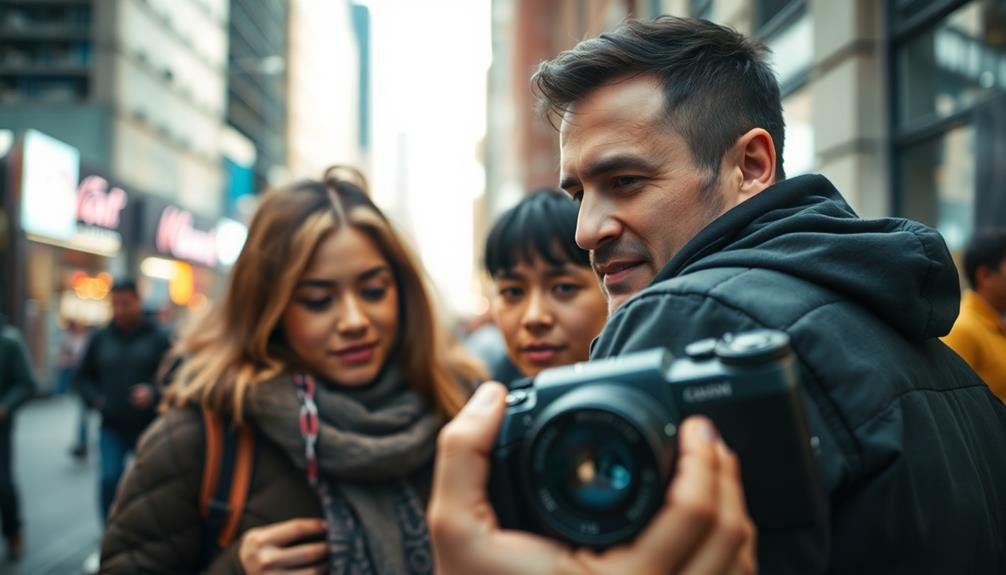
Capturing decisive moments is at the heart of documentary-style photography. It's the ability to freeze a split second in time that tells a compelling story or evokes powerful emotions.
To create a documentary-worthy photo series, you'll need to develop a keen eye for these fleeting instances and be ready to capture them at a moment's notice.
To achieve this, you must:
- Anticipate action and be prepared
- Develop quick reflexes and intuition
- Understand your subject matter deeply
Stay alert and observe your surroundings carefully. Look for subtle cues that might indicate an impending moment of significance.
This could be a change in body language, a shift in lighting, or an unexpected interaction between subjects. Trust your instincts and don't be afraid to take multiple shots in rapid succession.
Ethical Considerations in Documentation
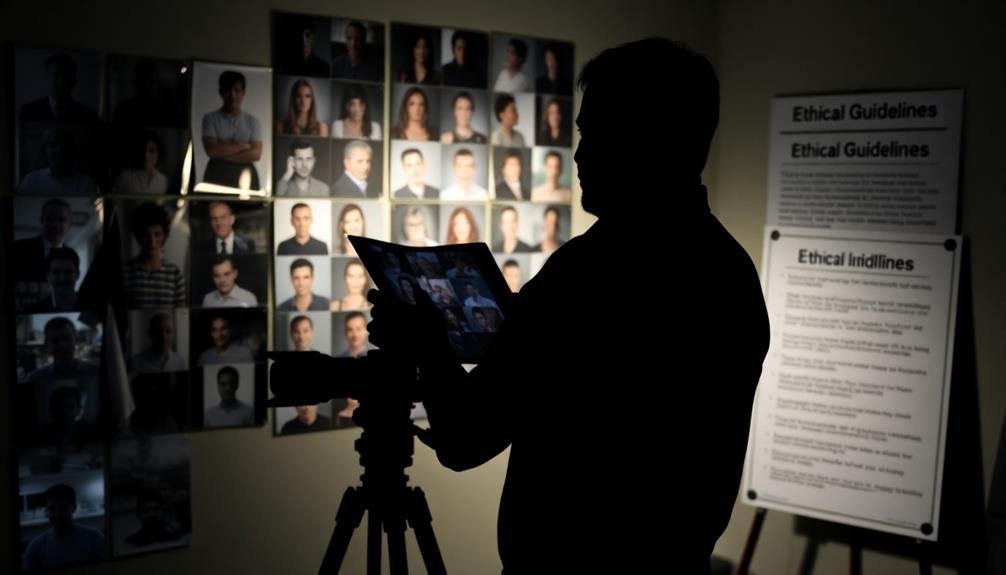
As you explore deeper into documentary photography, you'll encounter ethical dilemmas that require careful consideration. Your responsibility as a photographer extends beyond capturing compelling images; it involves respecting the dignity and rights of your subjects.
Always obtain informed consent before photographing individuals, especially in vulnerable situations. Be transparent about your project's purpose and how you'll use the images. Avoid exploiting or sensationalizing your subjects' circumstances for shock value or personal gain.
Consider the potential consequences of your work on the people and communities you're documenting. Will your photos put them at risk or negatively impact their lives? Endeavor to present a balanced, nuanced perspective that doesn't reinforce harmful stereotypes or oversimplify complex issues.
Maintain integrity in your post-processing. While minor adjustments are acceptable, avoid manipulating images in ways that alter their fundamental truth. Be honest about staged or recreated scenes, and provide accurate captions and context for your photos.
Lastly, reflect on your own biases and motivations. Are you approaching the subject with genuine empathy and understanding? Your ethical approach will greatly influence the authenticity and impact of your documentary series.
Frequently Asked Questions
How Long Should a Documentary Photo Series Typically Be?
You'll find there's no strict rule for documentary photo series length. It can vary from 5-50 images, depending on your story's complexity. Focus on quality over quantity, ensuring each photo contributes meaningfully to your narrative.
Are Black and White Images More Impactful for Documentary Photography?
Black and white images can be powerful for documentary photography, but they're not always more impactful. You'll find that color can be equally effective. It depends on your subject matter and the story you're trying to tell.
What Equipment Is Essential for Beginners in Documentary Photography?
You'll need a reliable camera, preferably with manual controls. Don't forget extra batteries, memory cards, and a sturdy tripod. A versatile zoom lens is helpful. Most importantly, bring your curiosity and keen observation skills.
How Can I Gain Access to Sensitive Subjects or Locations?
To gain access to sensitive subjects or locations, you'll need to build trust, respect boundaries, and be transparent about your intentions. Network with local contacts, obtain necessary permissions, and always prioritize ethical considerations in your approach.
Should I Include Captions or Text With My Documentary Photo Series?
You should include captions or text with your documentary photo series. They provide essential context, enhance viewer understanding, and convey important details. Brief, informative captions can greatly strengthen your narrative and make your images more impactful.
In Summary
You've now got the tools to create a documentary-worthy photo series. Remember, it's not just about technical skill—it's about telling a powerful story. Stay authentic, capture those decisive moments, and maintain visual consistency. Don't forget the ethical considerations as you document your subjects. With these elements in place, you'll create a compelling narrative that resonates with viewers and sheds light on important cultural or social issues.





Leave a Reply